
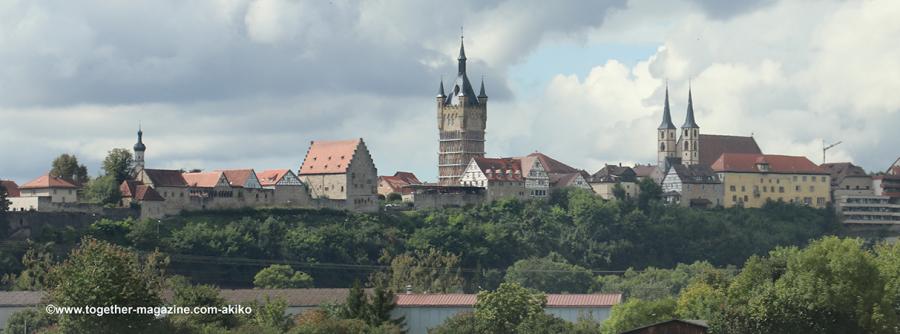
Bad Wimpfen and Burg Guttenberg are located in the beautiful Neckar Plain about an hour by car from Stuttgart or 1,5 hours from Kaiserslautern. Take the first exit on the highway A6 going towards Mannheim, the exit Neckarsulm and then head toward Mosbach. But beware – there are 4 stationary radar traps on this stretch of about 10 miles. Bad Wimpfen and the knights castle Burg Guttenberg were spared damage during World War II, so many old historical buildings are left intact. It is a wonderful, hidden sightseeing spot. Bad Wimpfen has been called the most beautiful riverside city in Germany. Bad Wimpfen’s most famous landmark is the blue tower. This tower is the defense tower of the castle built in the 12th century where the guards have lived for 650 years. The tower is a great place to get a magnificent view of the old town and Neckar Valley.
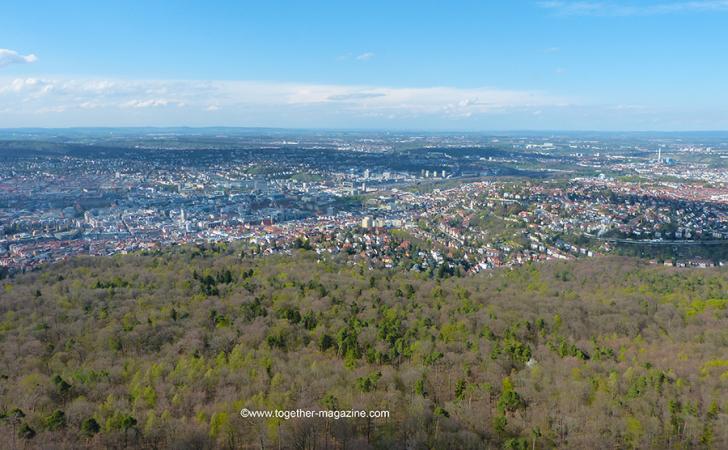
For all of you who are new to Stuttgart, or not just new to Stuttgart, but new to Germany – Welcome, to Germany and to Stuttgart. Stuttgart is not only my hometown, but, with over 620,000 residents, the largest city in the state of Baden-Wuertemberg. It is also the B-W capital and the sixth largest city in Germany. Stuttgart is also the center of the “Stuttgart region” which includes the cities of Boeblingen, Esslingen and Ludwigsburg.
 The Stuttgart spring fest starts with a 4 day weekend into its 79th year. This year it is opening right in time to celebrate the end of fasting on the Saturday before Easter. Old and young visitors can look forward to 3 eventful weeks in the capital of the State of Baden Wuerttemberg, starting at April 15th to May 7th 2017. Expect to be entertained by the 250 different food stands, rides and salesmen. It does not matter if you prefer a ride on one of the many colorful merry-go-rounds, the candy stands, a stroll through the Kraemermarket or proper fest music in the beer tents, everyone’s wishes will be satisfied. “The 23 days of celebration at the Wasen make it a great place for Families and what’s even better, this year’s Easter break falls right into the first week of the Fruehlingsfest.” Comments Andreas Kroll, head of the Stuttgart’s Event Management Ltd team. “We can look forward to a family friendly mood during that entire week and not just on Wednesdays, the already popular family days.
The Stuttgart spring fest starts with a 4 day weekend into its 79th year. This year it is opening right in time to celebrate the end of fasting on the Saturday before Easter. Old and young visitors can look forward to 3 eventful weeks in the capital of the State of Baden Wuerttemberg, starting at April 15th to May 7th 2017. Expect to be entertained by the 250 different food stands, rides and salesmen. It does not matter if you prefer a ride on one of the many colorful merry-go-rounds, the candy stands, a stroll through the Kraemermarket or proper fest music in the beer tents, everyone’s wishes will be satisfied. “The 23 days of celebration at the Wasen make it a great place for Families and what’s even better, this year’s Easter break falls right into the first week of the Fruehlingsfest.” Comments Andreas Kroll, head of the Stuttgart’s Event Management Ltd team. “We can look forward to a family friendly mood during that entire week and not just on Wednesdays, the already popular family days.
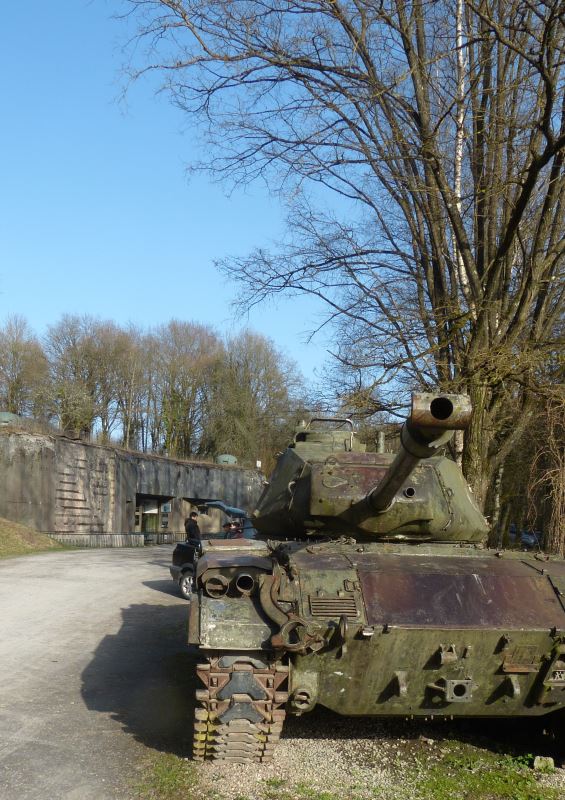
The Maginot Line extends over a distance of more than 500 miles on the French border. The construction began during the 1930s world economic crisis and lasted until 1940. It was also planned as a job creation program for the French state as there were many unemployed people who found employment that way. Up to 20,000 workers were involved in the construction of the Maginot Line, about 800 with the fortress in Lembach.
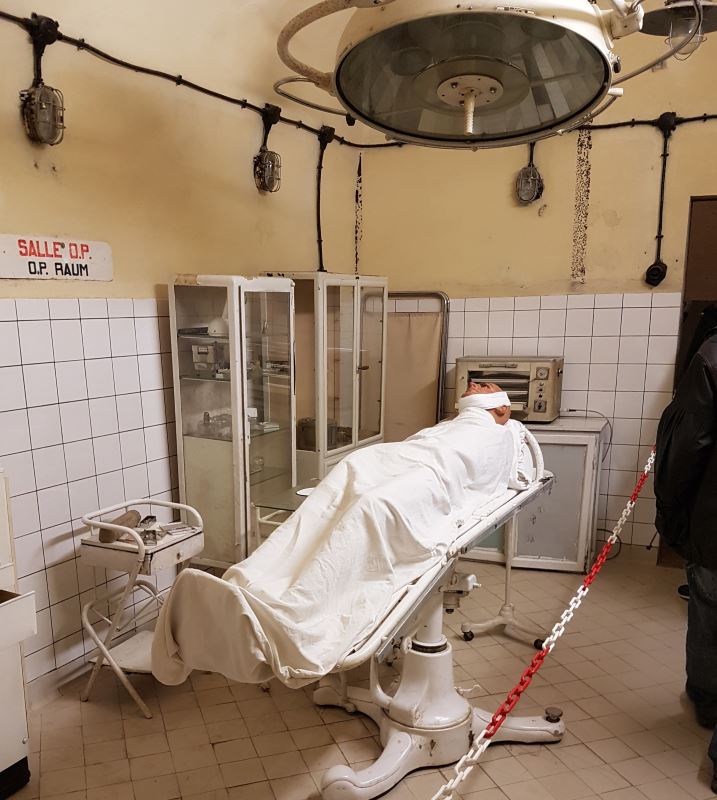 When you come through Wissembourg, you may continue in the direction of Lembach. Over a narrow road, which crosses the foothills of the northern Vosges, you can reach Lembach going through Climbach. Follow the signs "Ligne Maginot" in the town center. Just one mile outside the small town lies the fortress built in the hill to the left of the road. In front of the fortress stands an old M 41
When you come through Wissembourg, you may continue in the direction of Lembach. Over a narrow road, which crosses the foothills of the northern Vosges, you can reach Lembach going through Climbach. Follow the signs "Ligne Maginot" in the town center. Just one mile outside the small town lies the fortress built in the hill to the left of the road. In front of the fortress stands an old M 41 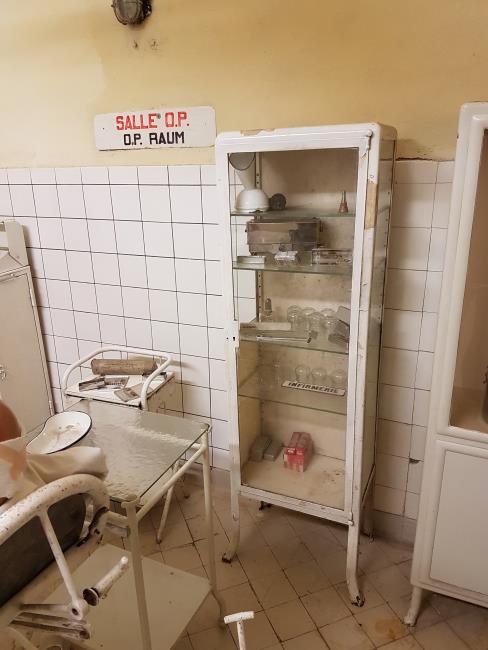
"Walker Bulldog" tank of the US Army from 1951. Approximately 100 yards behind the tank, one sees parts of the fortress - a solid concrete structure with the material entrance, machine gun openings left and right and, a few meters above, the gun couplings. Our tour started at 2:30pm. Our guide was an almost 70-year old veteran of the French army. He told us that the fortress is still owned by the army and that it has been open to visitors since 1983. First, we went a steep way up outside the fortress, and after about 250 yards, we were at the team entrance. Also, there again, you find the same picture. Machine guns on both sides, which had the forecourt completely in the firing field. Then began the journey into the past. The walkway is about seven feet wide and did not lead straight into the interior of the plant but is angled several times and again secured by machine guns and armored doors. We were then in the barracks area of the plant. In the fortress, there is always the same temperature no matter if summer or winter - always 55° Fahrenheit, and the air is very humid. We walked several hundred yards along the main aisle, and from there we could look into rooms where the ventilation was housed. A slight overpressure prevailed in the plant so that no penetration of poison gas, in case of an attack, was possible. Then we were led through the team kitchen, huge kettles, a baking oven, storage and cooling rooms, and very importantly the wine cellar. Each of the 580 men's crew received a quarter of a liter of red wine at each meal.
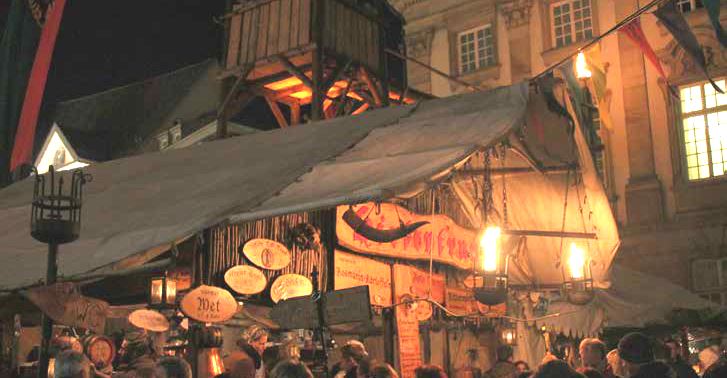 It won’t take long to realize that the Esslingen market is different from other markets you may visit in Europe. Visiting the Esslingen Christmas market is like stepping back into the medieval ages. The market is surrounded by half-timbered wooden houses dating back from the 13th to 16th centuries that will surprise and delight you, and costumed performers stroll the streets alongside of period-dressed vendors. Aside from the many visitors, over 1 million people visited last year, you get a feeling of traveling back to the Middle Ages.
It won’t take long to realize that the Esslingen market is different from other markets you may visit in Europe. Visiting the Esslingen Christmas market is like stepping back into the medieval ages. The market is surrounded by half-timbered wooden houses dating back from the 13th to 16th centuries that will surprise and delight you, and costumed performers stroll the streets alongside of period-dressed vendors. Aside from the many visitors, over 1 million people visited last year, you get a feeling of traveling back to the Middle Ages.
Copyright Together Magazine by Uwe Warnack © 2024
Designed with by pixagentur